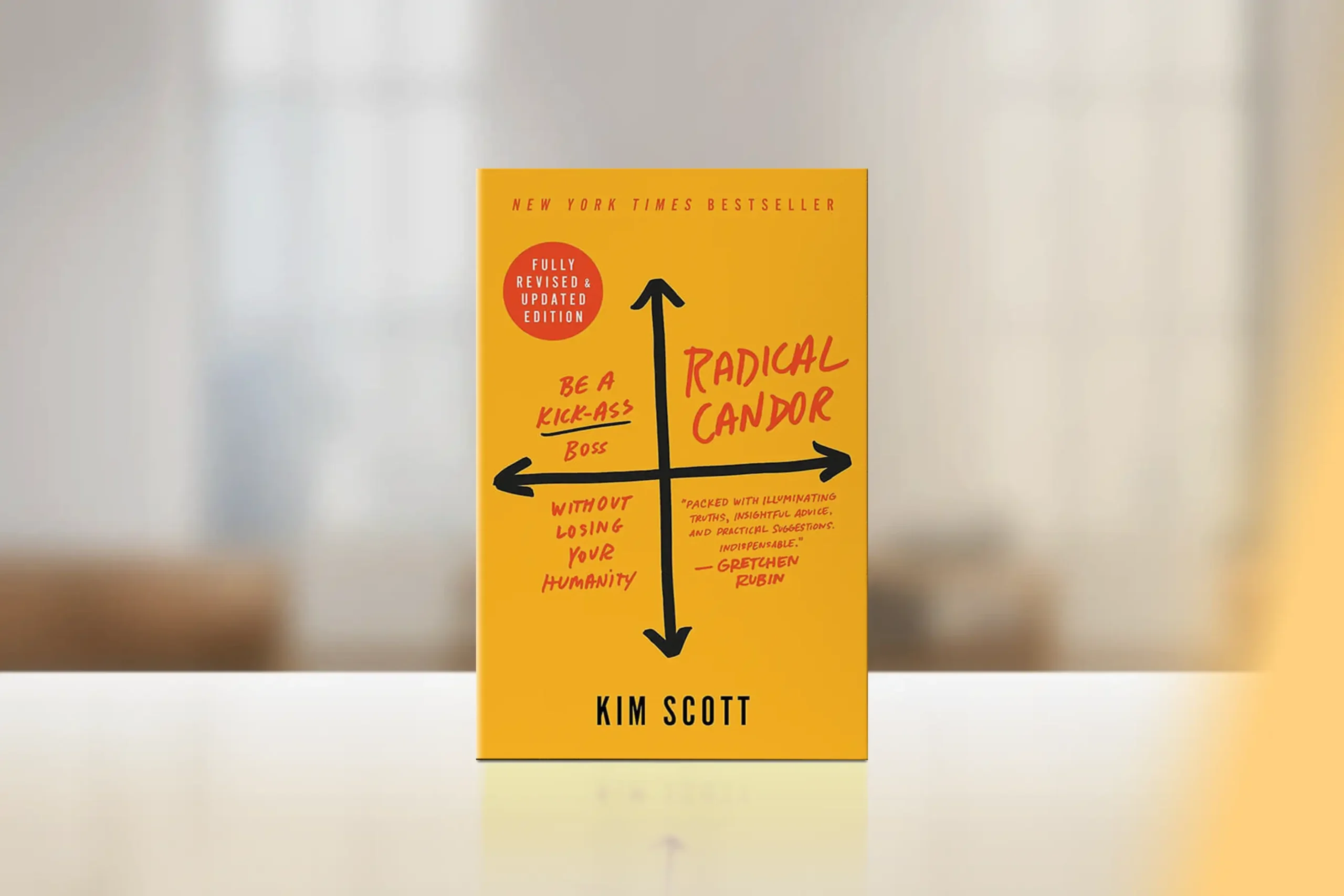Have you ever watched someone effortlessly steer a meeting to their preferred outcome? Or noticed how certain colleagues seem to have their ideas embraced without resistance? What if that could be you?
In today’s dynamic workplace, the ability to influence decisions is perhaps the most underrated career superpower. Professionals skilled in influence consistently advance further and faster than their equally talented but less persuasive peers. At executive levels, the importance of these skills becomes even more pronounced, with influence ability often making the difference between success and stagnation.
Mastering influence in the workplace requires both understanding the psychology behind decision-making and developing practical techniques for guiding outcomes. Whether advocating for resources, leading change, or simply wanting your expertise recognized, your success depends more on influence skills than technical knowledge alone. This guide explores proven strategies to transform how you navigate workplace dynamics, helping you become a respected shaper of decisions that advance both your career and organizational goals.
Introduction: Why Influence Matters in Your Career
“Influence is not about manipulating others to get what you want,” writes Robert Cialdini in his groundbreaking book Influence: The Psychology of Persuasion. “Rather, it’s about understanding human psychology so thoroughly that you can structure your ideas in ways that resonate deeply with others.”
In his classic book How to Win Friends and Influence People, Dale Carnegie established the timeless principle that genuine interest in others forms the foundation of all influence: “You can make more friends in two months by becoming interested in other people than you can in two years by trying to get other people interested in you.” This insight remains remarkably relevant in today’s workplace.
As emphasized in the Dale Carnegie blog article “Why It Is Important to Build Influencing Skills at Work”, “being influential versus being authoritarian engages others more effectively and produces better business results.” This distinction is crucial—whether you’re an expert contributing in an executive meeting, a newly promoted manager initiating a complex project, or a mid-level leader negotiating with an important client, your success depends on your ability to influence rather than dictate.
Understanding the psychology of workplace relationships is essential for career growth. As explored in The Importance of Continuous Learning in Career Development, building influence skills should be an ongoing priority throughout your professional journey.
Whether you’re hoping to get your project approved, advocate for a promotion, or negotiate a flexible schedule, influence skills determine your success. The good news? These skills can be learned and applied ethically to create better outcomes for yourself and your team.
How Influence Shapes Your Career Journey
Career advancement decisions are influenced by numerous factors beyond job performance, including your ability to build relationships and advocate effectively for yourself. Your influence skills affect both daily wins and long-term progression.
Daily Workplace Wins
Influence affects your workday through:
- Getting your ideas heard: Team members seeking your input rather than talking over you
- Securing resources: Successfully making the case for budget, staff, or time
- Managing up: Your boss supporting your recommendations
- Cross-functional cooperation: Colleagues from other departments willingly collaborating
- Recognition: Your contributions being noticed and valued
If you’re a technical professional, don’t dive straight into specifications when proposing ideas. Instead, start with the business problem you’re solving and explain how your solution impacts users or customers. You’ll find the same ideas that were previously ignored suddenly gaining traction.
For more insights on creating a career that aligns with your strengths, explore How to Build a Career You Love: From Plan to Action.
Long-Term Career Growth
Beyond day-to-day wins, influence shapes your career trajectory through:
- Promotion opportunities: Decision-makers advocating for your advancement
- Project assignments: Being selected for high-visibility work
- Salary negotiations: Effectively advocating for your compensation
- Professional reputation: Becoming known as someone who makes things happen
- Network development: People actively seeking connections with you
If you find your career stalled, consider shifting focus from technical expertise to relationship building with senior leaders. Understanding the business challenges keeping executives up at night and framing your contributions in those terms can accelerate your advancement dramatically.
As highlighted in Emotional Intelligence: Developing Your EQ for Personal and Professional Growth, understanding emotions creates a powerful foundation for professional influence.
The Psychology Behind Effective Influence
Most workplace decisions are made based on emotional factors first, with logical justification following afterward. As Professor Pam Jones from Hult International Business School notes, effective influencers adapt their approach based on how different stakeholders “receive and process information.” Understanding these psychological patterns gives you significant advantage in any professional setting.
How Workplace Decisions Really Happen
To influence effectively, understand these key decision-making principles:
- Emotion drives, logic justifies: People decide based on feelings, then rationalize
- Social proof matters: We look to others’ behavior to determine what’s appropriate
- Authority creates shortcuts: Established expertise streamlines decision-making
If you’re struggling to get approval for a new project or idea, consider that data alone rarely convinces. Instead, try sharing case studies of similar successful approaches, particularly from competitors or respected organizations in your industry. This social proof can be more persuasive than even the most comprehensive data.
The Science of Persuasive Communication
Research in behavioral science reveals several principles that make your ideas more influential:
- Stories outperform statistics: Narrative engages both emotion and logic
- Concrete beats abstract: Specific examples influence more than general concepts
- Loss aversion: The possibility of loss motivates more than potential gain
In his landmark book Influence: The Psychology of Persuasion, Dr. Robert Cialdini identifies six universal principles that drive human behavior: reciprocity, commitment/consistency, social proof, authority, liking, and scarcity. Understanding these principles gives you powerful tools for ethical workplace persuasion.
When seeking funding or resources, don’t just request a budget increase. Instead, clearly show what specific capabilities your team or organization would lose without proper funding. This loss-framing approach often leads to more favorable responses than focusing only on potential gains.
For more insights on crafting persuasive messages, check out The Art of Persuasion: Influencing Others with Integrity.
Building Your Influence Foundation
Trust is essential for effective workplace relationships. According to the Trust Barometer by Edelman, employees say trust is essential for effective workplace relationships. Without this foundation, even brilliant ideas and perfect execution will fail to generate the impact they deserve.
Developing Trust and Credibility
All effective influence starts with trust. Without it, even the best ideas meet resistance:
- Demonstrate competence: Show you can deliver through consistent performance
- Display warmth: Build genuine connections by showing interest in others
- Maintain integrity: Follow through on commitments, even small ones
- Admit mistakes: Acknowledge errors and focus on solutions
- Show vulnerability: Appropriate openness builds stronger connections
You might think you need to appear perfect to gain influence, but the opposite is often true. When you acknowledge what you don’t know and ask for input, your team’s trust in you typically increases rather than decreases. Appropriate vulnerability signals confidence and authenticity.
For a deeper exploration of how trust forms the foundation of professional relationships, check out Building and Maintaining Healthy Relationships.
Understanding Others’ Perspectives
You can’t influence effectively without understanding what matters to your audience:
- Listen more than you speak: Ask questions that uncover underlying concerns
- Identify motivations: Discover what drives different stakeholders
- Map the decision landscape: Know who influences whom in your organization
- Spot unstated concerns: Learn to read between the lines
- Recognize constraints: Understand the limitations others are working within
As Harvard Business Review notes in How to Increase Your Influence at Work, “The best way to prime colleagues for backing you and your agenda is to make them feel heard.” Give people your undivided attention in one-on-one situations, turning your body toward them and practicing the discipline of focused listening. This simple act can significantly reduce workplace resentment and increase your influence.
If you’ve struggled to get support from another department, spend time understanding their priorities and constraints. For example, if IT seems to be ignoring your requests, they might be overwhelmed with security concerns. When you reframe your request in terms of reducing security risks rather than just highlighting your needs, you’re much more likely to get the support you need.
To master the art of truly understanding others, explore What Every Body Is Saying: An Ex-FBI Agent’s Guide to Speed-Reading People by Joe Navarro, which provides practical techniques for reading non-verbal cues that reveal what people really think and feel.
Ethical Influence Techniques That Work
Ethical influence approaches result in stronger long-term relationships than manipulative tactics. These techniques not only work better, but they also build rather than erode your professional reputation.
The Head, Heart, and Hands of Influence
As highlighted in the Center for Creative Leadership’s article on “How to Influence People,” effective influence tactics generally fall into three categories:
- Logical Appeals (Head): Using rational arguments and evidence to persuade
- Emotional Appeals (Heart): Connecting to values, purpose, and personal motivation
- Cooperative Appeals (Hands): Creating collaboration and shared ownership
The most effective influencers select their approach based on both the situation and audience, often using a blend of all three tactics for complex influence scenarios.
Framing: The Art of Perspective
How you present information dramatically affects how it’s received:
- Problem-solution framing: Define the problem in a way that positions your idea as the natural solution
- Opportunity framing: Present changes as opportunities rather than challenges
- Value alignment: Connect your proposal to your audience’s core values
- Scale perspective: Adjust between big-picture and detailed views based on your audience
- Temporal framing: Consider whether short-term or long-term perspectives will resonate better
When seeking flexible work arrangements, don’t frame it as requesting permission to work from home. Instead, propose a three-month pilot to test whether it increases your productivity. By framing it as a benefit to the team, not just to yourself, your manager will be much more open to trying it.
For additional strategies on framing workplace conversations effectively, Work-life balance: How to balance Ambition with Wellbeing provides valuable insights on positioning your needs in ways that resonate with organizational priorities.
Building Coalitions and Allies
Few significant workplace decisions involve just one person:
- Identify potential supporters: Who benefits from your idea or shares your perspective?
- Start with receptive audiences: Build momentum with those most likely to be supportive
- Create champions: Equip others to advocate on your behalf
- Address concerns proactively: Anticipate objections and prepare thoughtful responses
- Involve stakeholders early: People support what they help create
Harvard Business Review’s article How to Increase Your Influence at Work recommends creating a “power map” to guide your influence campaign: “Create an org chart of decision makers related to your issue,” and for each level, ask yourself, “Can I influence this person directly? If not, whom can I influence who can influence that person?” This strategic approach helps you visualize the pathways of influence and target your efforts more effectively.
When proposing any significant change, first speak individually with colleagues who have expressed frustrations with the current system. By the time you present at the team meeting, you’ll already have vocal supporters. This approach often results in approval in just one discussion, rather than weeks of deliberation.
For a comprehensive approach to building professional relationships that matter, explore The Power of Networking: Building Meaningful Connections for Career Success.
Strategic Communication Approaches
The how, when, and where of your communication matters as much as the what:
- Choose the right medium: Know when to use email, chat, phone, or in-person conversations
- Time your requests strategically: Consider when decision-makers will be most receptive
- Use the power of preparation: Do your homework before important conversations
- Create multiple touchpoints: Important ideas need reinforcement through various channels
- Adjust to communication preferences: Some people prefer data, others stories, others visuals
If your ideas aren’t getting traction in team meetings, consider how your manager processes information. Some people need time to think before responding. Try sending a brief email with your key points the day before meetings to give them processing time. This simple adjustment can dramatically increase your implementation rate.
For insights on how to craft messages that resonate with different audiences, check out Building Your Personal Brand: From LinkedIn to Thought Leadership.
The Ethics of Workplace Influence
Professionals consistently value ethical environments and many would consider leaving their organization if pressured to compromise their values. Ethical influence isn’t just right—it’s essential for sustainable career success.
Influence vs. Manipulation: The Critical Difference
Ethical influence is built on several key principles:
- Transparency about goals: Be honest about what you’re trying to achieve
- Respect for autonomy: Leave others free to make their own informed choices
- Mutual benefit: Seek outcomes that benefit all parties, not just yourself
- Truthful communication: Present information accurately, even when inconvenient
- Long-term relationship focus: Prioritize sustainable trust over short-term wins
If you find yourself emphasizing only the positives of your proposal while hiding potential downsides, you’ve crossed the line from influence to manipulation. Short-term gains from such approaches typically result in damaged trust and diminished influence over time.
In Overcoming Imposter Syndrome in Your Professional Life, you’ll find valuable strategies for maintaining ethical influence while building your confidence in workplace interactions.
Navigating Ethical Gray Areas
Not all influence situations have clear ethical guidelines:
- Limited information: When you can’t share all relevant details due to confidentiality
- Competing interests: When various stakeholders have conflicting needs
- Power imbalances: When influence occurs across authority levels
- Cultural differences: When influence practices vary across cultural backgrounds
- Urgency situations: When time constraints limit full discussion
When facing these challenges, focus on maintaining transparency about the constraints themselves. For example, if you can’t share certain information, explicitly acknowledge this limitation rather than pretending to have all the answers.
For guidance on maintaining your integrity while navigating complex professional situations, Redefining Success: Breaking Free from Societal Expectations offers valuable insights on aligning your influence approach with your authentic values.
Practical Influence Strategies You Can Use Tomorrow
Implementing even a single well-chosen influence technique can dramatically increase your idea adoption rates. These practical approaches can be applied immediately across various workplace scenarios.
For Getting Your Ideas Adopted
- Start with why: Begin with the purpose and benefits before diving into details
- Make it tangible: Use demonstrations or pilot tests to make abstract ideas concrete
- Reduce perceived risk: Suggest small trials or reversible first steps
- Connect to existing priorities: Show how your idea advances current objectives
- Prepare for the second meeting: The first discussion seeds the idea; the follow-up often secures the decision
As explored in The Innovation Edge: Leveraging Diverse Networks for Breakthrough Ideas, starting with purpose dramatically increases idea adoption.
For Advancing Your Career
- Visibility creation: Ensure decision-makers are aware of your contributions
- Strategic volunteering: Choose assignments that showcase skills relevant to your desired next role
- Solution orientation: Become known for solving problems, not just identifying them
- Peer recognition: Build a reputation through colleague testimonials
- Value articulation: Clearly explain how your work impacts organizational goals
For strategies on positioning yourself for advancement, Building Your Personal Brand: From LinkedIn to Thought Leadership provides practical techniques for increasing your professional visibility.
For Negotiating Effectively
- Prepare thoroughly: Research benchmarks and alternatives
- Focus on interests, not positions: Understand the underlying needs of all parties
- Create options for mutual gain: Develop multiple possible solutions
- Use objective criteria: Reference external standards for fairness
- Build relationships before and after: Negotiation happens within ongoing relationships
For mastering the art of negotiation in professional settings, How to Successfully Navigate a Career Change offers insights on influence techniques that are particularly effective when advocating for new opportunities or responsibilities.
Your 4-Week Influence Plan
A structured skill development plan will help you master influence capabilities far more effectively than casual, unstructured learning. This four-week approach builds core influence capabilities systematically.
Week 1: Self-Assessment and Analysis
- Identify your influence strengths and weaknesses
- Map key decision-makers and influencers in your organization
- Select one specific situation where you want to increase your influence
- Research what motivates the people you need to influence
Week 2: Strategy Development
- Craft your message with clear benefits for stakeholders
- Prepare responses to potential objections
- Identify potential allies who could support your position
- Plan the ideal timing and setting for your influence attempt
Week 3: Practice and Refinement
- Test your message with a trusted colleague for feedback
- Refine your approach based on feedback
- Build relationships with key stakeholders
- Practice your delivery until it feels natural
Week 4: Implementation and Evaluation
- Execute your influence plan with confidence
- Observe responses and adapt in real-time
- Follow up appropriately based on initial results
- Reflect on what worked and what to improve next time
For practical guidance on implementing your influence strategies, Transform Your Career with a Growth Mindset: Key Strategies for Success provides a powerful framework for approaching workplace challenges more effectively.
Moving Forward
Influence skills are a strong predictor of career advancement among executives, with the most successful leaders consistently citing them as critical to their achievement. This capability remains valuable regardless of industry changes or economic conditions.
Influence isn’t about getting your way today—it’s about building your ability to create positive outcomes throughout your career. As you develop these skills, you’ll find yourself able to:
- Shape your role to align with your strengths
- Build support for initiatives you believe in
- Navigate organizational change more effectively
- Create opportunities for yourself and your team
- Develop a reputation as someone who makes positive things happen
Consider these questions as you continue your influence journey:
- What workplace situation would benefit most from improving your influence approach?
- Which influence skills come most naturally to you, and which need development?
- How can you practice ethical influence in small, daily interactions?
- Who in your organization models effective influence that you admire?
- What one influence technique will you commit to practicing this week?
For ongoing skill development, The Compound Effect of Networking: Building a Career-Long Advantage offers advanced techniques for refining your approach as your career evolves.
The most successful professionals understand that doing great work isn’t enough—your ability to influence how that work is perceived determines your impact. By developing these skills thoughtfully and ethically, you’re investing in a capability that will serve you throughout your entire career journey.





